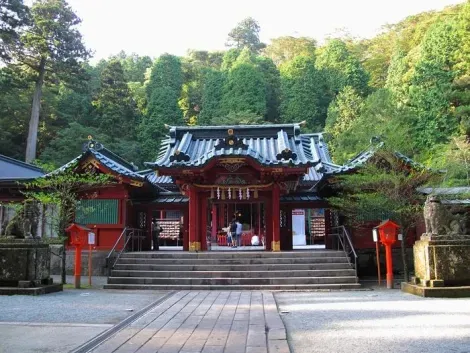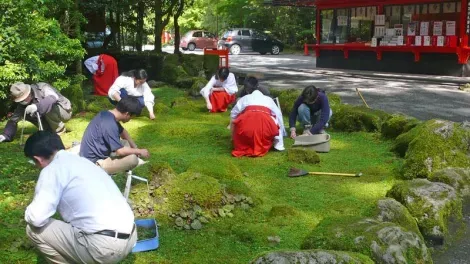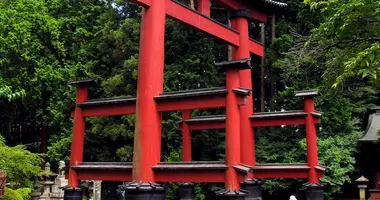Hakone Shrine 箱根神社
- Published on : 26/09/2014
- by : E.P.
- Youtube
Lake view
A shrine from the Heian period, nestled in Hakone Forest overlooking Lake Ashi, it's a peaceful oasis open to visitors every day.
Cedars and pines invaded this place a long time ago. They sit on the hillside of Mount Komagatake, about fifteen minutes north of Moto-Hakone. There, hidden among the trees, nestled in the density of nature in perfect harmony with Lake Ashi below, the shrine of Hakone Jinja - or Hakone Gongen - exudes tranquility and offers idyllic viewing points.
Founded by Emperor Kosho, it was the first shogun, Minamoto no Yoritomo (1147-1199) who made it more popular and frequented in the Kamakura period (1185-1333) as a refuge after a lost battle. But once the war was won, Minamoto returned to the land of salvation and became master of the shrine, which has now been under the protective aura of power for centuries.
Religion first, then peace
Despite the warrior legend of the Soba brothers, which includes Yoritomo Minamoto, and according to which the Minamoto and Taira families fought for control of the country in the twelfth century, the shrine leaves more room for peace and tranquility.
Its main building, lost in the forest, is mainly dedicated to Ninigi no Mikoto (grandson of the sun goddess Amaterasu), Ko-no-hana, flower princess, as well as Hoori no Mikoto, son of the above-mentioned two and ancestor of the first emperors of Japan. Sun, flowers and tradition, Hakone Jinja celebrates the symbiosis between its atmosphere and the divinities worshiped within it.
Divinities that are also celebrated in the homotsu-den, the treasure room which houses a statue of the founder of the shrine, priest Mangan, and other works such as a fresco depicting the history of the site. Every July 31st, the shrine organizes the Ashinoko Kosui Matsuri Festival to celebrate the legendary deified dragon of the lake of the same name.
Modernity as well, as the twentieth century marks the site. Destroyed by numerous fires, the latest version of the honden, the main building which is revealed at the last moment along a stone walkway, dating from 1936 And above all, erected in 1951, Heiwa torii, "the icing on the cake" a gigantic red gate, which is adorned with a mystical halo when the fog invades its watery surroundings.
Celebrating the peace treaty that Japan signed with forty-nine other nations after World War II, this monument on the banks of Lake Ashi, which is accessed by a path from the honden that snakes its way along the mountainside, continues to attract Visitors impressed by its majestic aura, and surprised to see Mount Fuji at their feet.

























